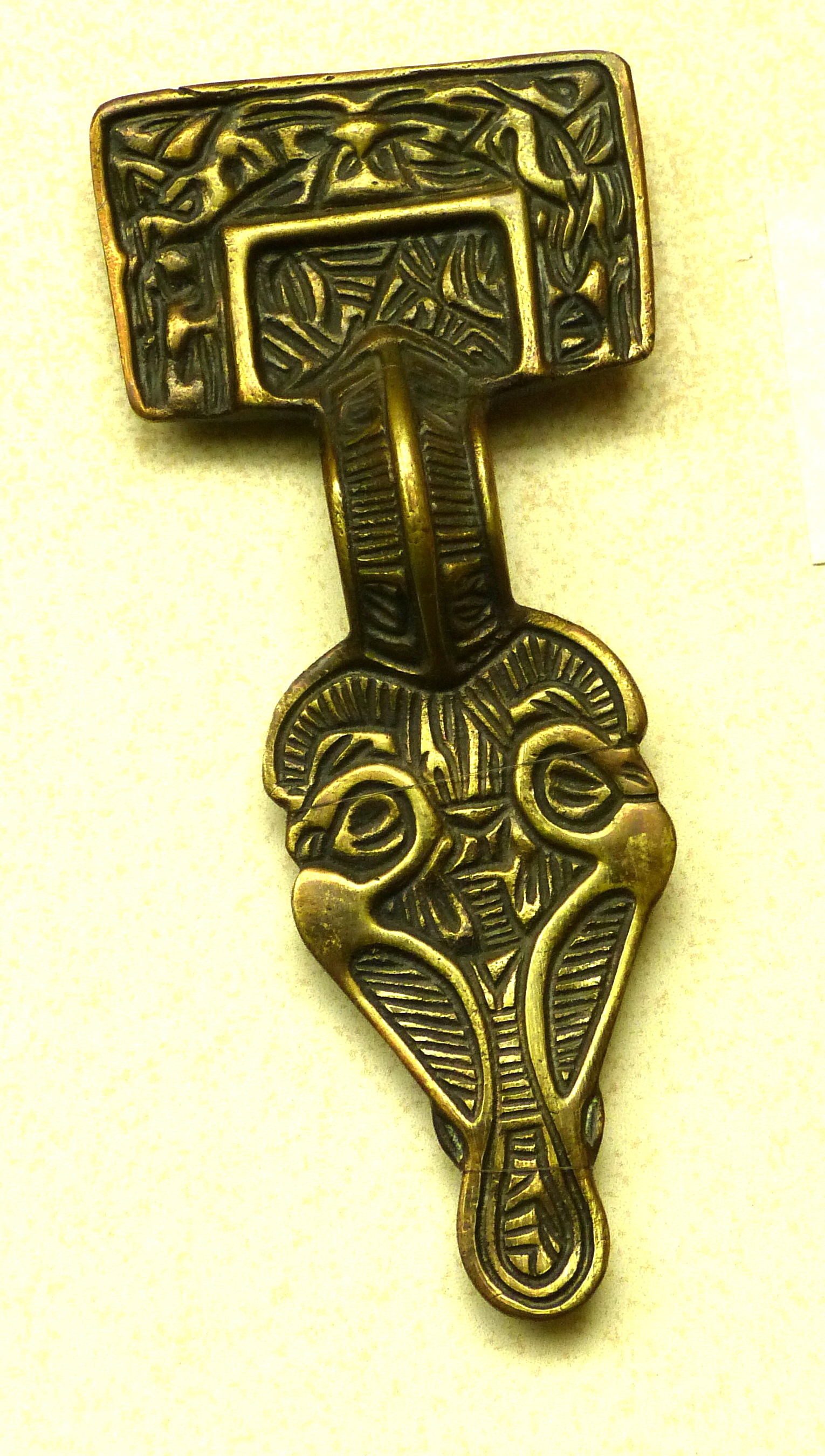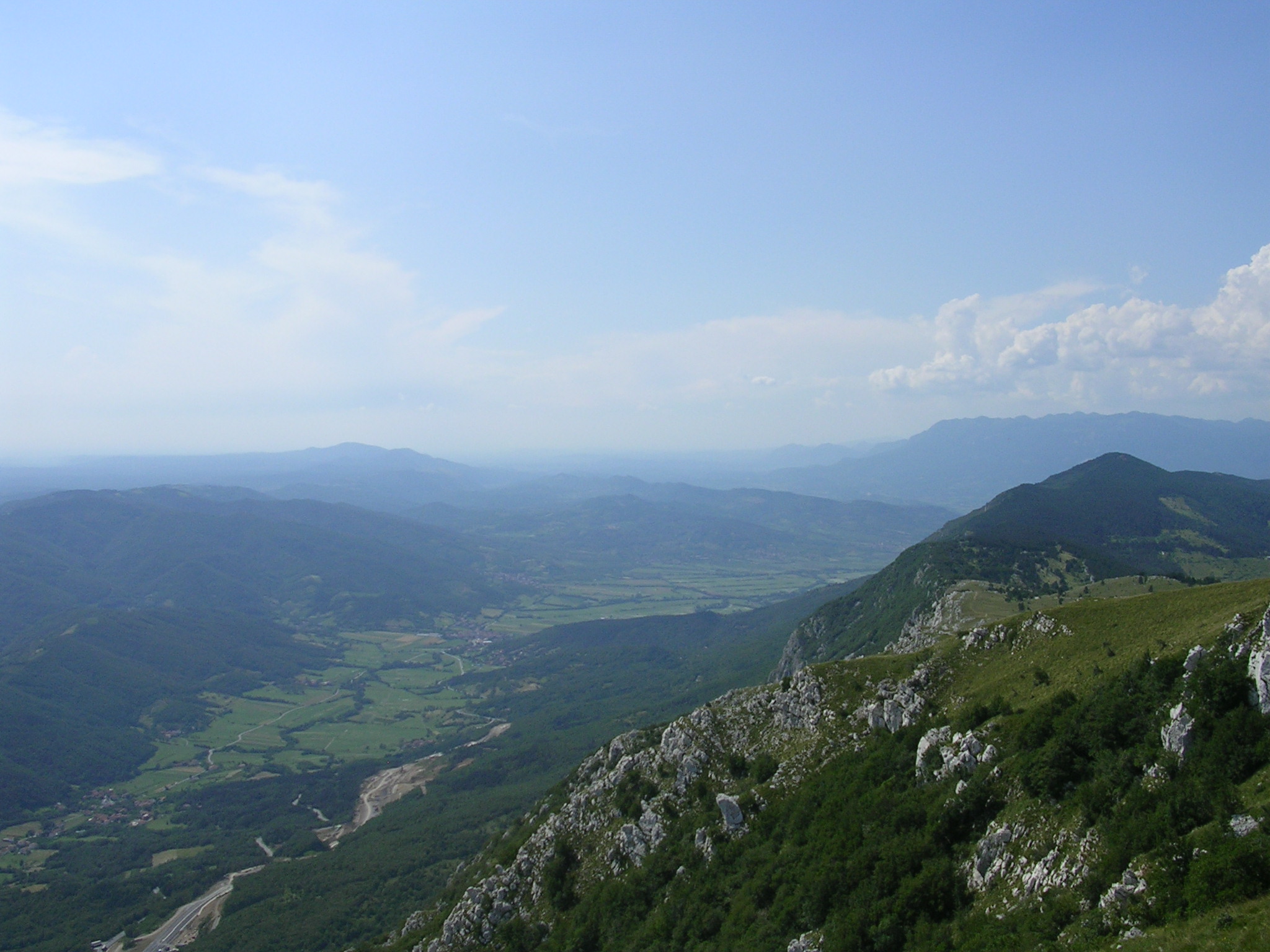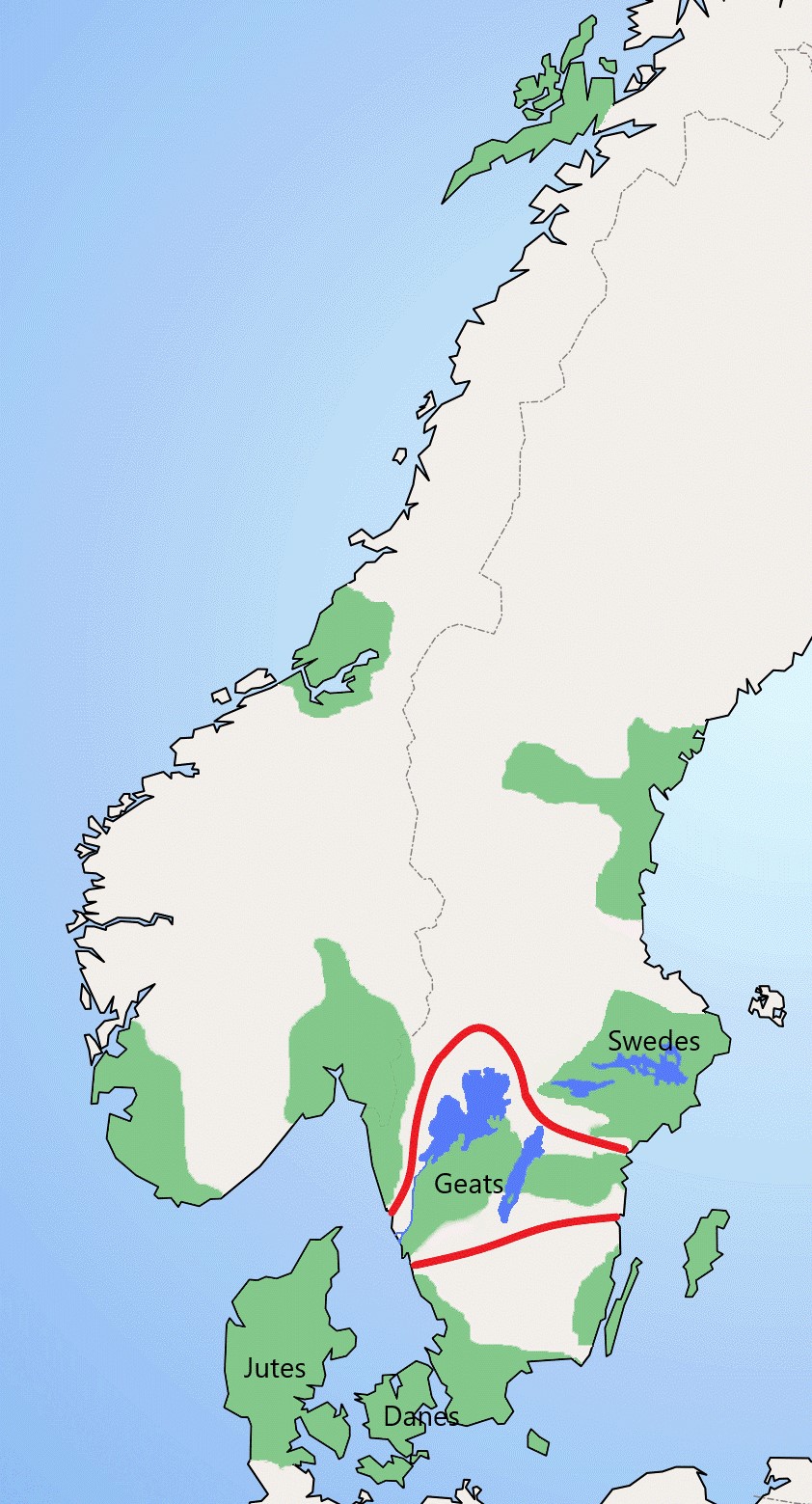|
Menia Martinez
Menia (fl. c. 500) was the queen of the Thuringians by marriage and the earliest named ancestor of the Gausian dynasty of the Lombards. She became a legendary figure after her death, strongly associated with gold and wealth. Only one other person is known by the name Menia, from a 9th-century polyptych of the Abbey of Saint-Remi. In origin it is probably a Germanic name, signifying collar, ring or necklace, and by extension treasure.Wolfram Brandes, "Das Gold der Menia: Ein Beispiel transkulturellen Wissenstransfers", ''Millennium'' 2 (2005): 175–226, esp. 181ff. Menia's marriage is recorded only in the ''Historia Langobardorum codicis Gothani''. According to that source, she was the wife of King Pissa, usually identified as Bisinus, king of the Thuringians. The same source and the other Lombard chronicles make Bisinus the father of Raicunda, first wife of Wacho, king of the Lombards. She may have been the daughter of Menia. Frankish sources, such as Venantius Fortunatus, make ... [...More Info...] [...Related Items...] OR: [Wikipedia] [Google] [Baidu] |
Thuringians
The Thuringii, Toringi or Teuriochaimai, were an early Germanic people that appeared during the late Migration Period in the Harz Mountains of central Germania, a region still known today as Thuringia. It became a kingdom, which came into conflict with the Merovingian Franks, and it later came under their influence and Frankish control. The name is still used for one of modern Germany's federal states ('' Bundesländer''). First appearances The Thuringians do not appear in classical Roman texts under that name, but some have suggested that they were the remnants of the Suebic Hermanduri, the last part of whose name (''-duri'') could represent the same sound as (''-thuri'') and the Germanic suffix ''-ing'', suggests a meaning of "descendants of (the ermanuri)". This people were living near the Marcomanni. Tacitus in his "''Germania''", describes their homeland as being where the Elbe starts, but also having colonies at the Danube and even within the Roman province of Rhaetia. ... [...More Info...] [...Related Items...] OR: [Wikipedia] [Google] [Baidu] |
Baderic
Baderic, Baderich, Balderich or Boderic (ca. 480 – 529), son of Bisinus and Menia, was a co-king of the Thuringii. He and his brothers Hermanfrid and Berthar succeeded their father Bisinus. After Hermanfrid defeated Berthar in battle, he invited King Theuderic I of Metz to help him defeat Baderic in return for half of the kingdom. Theuderic I agreed and Baderic was defeated and killed in 529. Hermanfrid became the sole king. Baderic is known to have two daughters: Ingund and Aregund, who became the 3rd and 4th wives respectively of Clothar I Chlothar I, sometime called "the Old" (French: le Vieux), (died December 561) also anglicised as Clotaire, was a king of the Franks of the Merovingian dynasty and one of the four sons of Clovis I. Chlothar's father, Clovis I, divided the kingdo ..., King of the Franks. Notes * 480s births 529 deaths Germanic warriors Kings of the Thuringians 6th-century rulers in Europe Year of birth uncertain {{Europe-royal-stub ... [...More Info...] [...Related Items...] OR: [Wikipedia] [Google] [Baidu] |
Byzantine Empire
The Byzantine Empire, also referred to as the Eastern Roman Empire or Byzantium, was the continuation of the Roman Empire primarily in its eastern provinces during Late Antiquity and the Middle Ages, when its capital city was Constantinople. It survived the fragmentation and fall of the Western Roman Empire in the 5th century AD and continued to exist for an additional thousand years until the fall of Constantinople to the Ottoman Empire in 1453. During most of its existence, the empire remained the most powerful economic, cultural, and military force in Europe. The terms "Byzantine Empire" and "Eastern Roman Empire" were coined after the end of the realm; its citizens continued to refer to their empire as the Roman Empire, and to themselves as Romans—a term which Greeks continued to use for themselves into Ottoman times. Although the Roman state continued and its traditions were maintained, modern historians prefer to differentiate the Byzantine Empire from Ancient Rome ... [...More Info...] [...Related Items...] OR: [Wikipedia] [Google] [Baidu] |
Kenning
A kenning ( Icelandic: ) is a figure of speech in the type of circumlocution, a compound that employs figurative language in place of a more concrete single-word noun. Kennings are strongly associated with Old Norse-Icelandic and Old English poetry. They continued to be a feature of Icelandic poetry (including ''rímur'') for centuries, together with the closely related heiti. A kenning has two parts: a base-word (also known as a head-word) and a determinant. For example, the base-word of the kenning "íss rauðra randa" ('icicle of red shields' WORD Einarr Skúlason: ''Øxarflokkr'' 9) is ''íss'' ('ice, icicle') and the determinant is ''rǫnd'' ('rim, shield-rim, shield'). The thing, person, place or being to which the kenning refers is known as its referent (in this case a sword). Although kennings are sometimes hyphenated in English translation, Old Norse poetry did not require kennings to be in normal word order, nor do the parts of the kenning need to be side-by-side. The ... [...More Info...] [...Related Items...] OR: [Wikipedia] [Google] [Baidu] |
Sigurðarkviða Hin Skamma
''Sigurðarkviða hin skamma'' or the ''Short Lay of Sigurd'' is an Old Norse poem belonging to the heroic poetry of the ''Poetic Edda''. It is one of the longest eddic poems and its name derives from the fact that there was once a longer ''Sigurðarkviða'', but this poem only survives as the fragment '' Brot af Sigurðarkviðu'' (see the Great Lacuna). According to Henry Adams Bellows, the poem was mainly composed for "vivid and powerful characterization" and not for the telling of a story with which most of the listeners of his time were already quite familiar. Bellows notes that the story telling is closer to the German tradition (found in the ''Nibelungenlied'') than it is to the Scandinavian tradition, and that this is because the matter of Sigurd existed in many and varied forms in Northern Europe c. 1100 when the poem was probably composed. Synopsis The poem begins with the victorious young Sigurd the Völsung's arrival at the court of Gjúki and it informs that he swore ... [...More Info...] [...Related Items...] OR: [Wikipedia] [Google] [Baidu] |
Grottasöngr
''Grottasöngr'' (or ''Gróttasöngr''; Old Norse: 'The Mill's Songs', or 'Song of Grótti') is an Old Norse poem, sometimes counted among the poems of the ''Poetic Edda'' as it appears in manuscripts that are later than the '' Codex Regius''. The tradition is also preserved in one of the manuscripts of Snorri Sturluson's ''Prose Edda'' along with some explanation of its context. The myth has also survived independently in modified forms in northern European folklore. ''Gróttasöngr'' had social and political impact in Sweden during the 20th century as it was modernized in the form of ''Den nya Grottesången'' by Viktor Rydberg, which described conditions in factories using the mill of ''Grottasöngr'' as a literary backdrop. ''Poetic Edda'' Though not originally included in the '' Codex Regius'', ''Gróttasöngr'' is included in many later editions of the ''Poetic Edda''. ''Gróttasöngr'' is the work song of two young slave girls bought in Sweden by the Danish King Frodi (c ... [...More Info...] [...Related Items...] OR: [Wikipedia] [Google] [Baidu] |
Poetic Edda
The ''Poetic Edda'' is the modern name for an untitled collection of Old Norse anonymous narrative poems, which is distinct from the ''Prose Edda'' written by Snorri Sturluson. Several versions exist, all primarily of text from the Icelandic medieval manuscript known as the ''Codex Regius'', which contains 31 poems. The ''Codex Regius'' is arguably the most important extant source on Norse mythology and Germanic heroic legends. Since the early 19th century, it has had a powerful influence on Scandinavian literature, not only through its stories, but also through the visionary force and the dramatic quality of many of the poems. It has also been an inspiration for later innovations in poetic meter, particularly in Nordic languages, with its use of terse, stress-based metrical schemes that lack final rhymes, instead focusing on alliterative devices and strongly concentrated imagery. Poets who have acknowledged their debt to the ''Codex Regius'' include Vilhelm Ekelund, August Stri ... [...More Info...] [...Related Items...] OR: [Wikipedia] [Google] [Baidu] |
Oral Tradition
Oral tradition, or oral lore, is a form of human communication wherein knowledge, art, ideas and cultural material is received, preserved, and transmitted orally from one generation to another. Vansina, Jan: ''Oral Tradition as History'' (1985), reported statements from present generation which "specifies that the message must be oral statements spoken, sung or called out on musical instruments only"; "There must be transmission by word of mouth over at least a generation". He points out, "Our definition is a working definition for the use of historians. Sociologists, linguists or scholars of the verbal arts propose their own, which in, e.g., sociology, stresses common knowledge. In linguistics, features that distinguish the language from common dialogue (linguists), and in the verbal arts features of form and content that define art (folklorists)."Ki-Zerbo, Joseph: "Methodology and African Prehistory", 1990, ''UNESCO International Scientific Committee for the Drafting of a Gene ... [...More Info...] [...Related Items...] OR: [Wikipedia] [Google] [Baidu] |
Alboin
Alboin (530s – 28 June 572) was king of the Lombards from about 560 until 572. During his reign the Lombards ended their migrations by settling in Italy, the northern part of which Alboin conquered between 569 and 572. He had a lasting effect on Italy and the Pannonian Basin; in the former his invasion marked the beginning of centuries of Lombard rule, and in the latter his defeat of the Gepids and his departure from Pannonia ended the dominance there of the Germanic peoples. The period of Alboin's reign as king in Pannonia following the death of his father, Audoin, was one of confrontation and conflict between the Lombards and their main neighbors, the Gepids. The Gepids initially gained the upper hand, but in 567, thanks to his alliance with the Avars, Alboin inflicted a decisive defeat on his enemies, whose lands the Avars subsequently occupied. The increasing power of his new neighbours caused Alboin some unease however, and he therefore decided to leave Pannonia for It ... [...More Info...] [...Related Items...] OR: [Wikipedia] [Google] [Baidu] |
Duchy Of Friuli
The Duchy of Friuli was a Lombard duchy in present-day Friuli, the first to be established after the conquest of the Italian peninsula in 568. It was one of the largest domains in ''Langobardia Major'' and an important buffer between the Lombard kingdom and the Slavs, Avars, and the Byzantine Empire. The original chief city in the province was Roman Aquileia, but the Lombard capital of Friuli was ''Forum Julii'', modern Cividale. Along with the dukes of Spoleto, Benevento and Trent, the lords of Friuli often attempted to establish their independence from the royal authority seated at Pavia, though to no avail. After the Lombard campaign of Charlemagne and the defeat of King Desiderius in 774, the last Friulian duke Hrodgaud ruled until 776. Upon his death, Friuli was incorporated as a march of the Carolingian Empire. History Origins The Venetian territory around ''Forum Iulii'', still devastated by the Gothic War, was the first in former Roman Italy to be conquered by ... [...More Info...] [...Related Items...] OR: [Wikipedia] [Google] [Baidu] |
Audoin
Alduin (Langobardic: ''Aldwin'' or ''Hildwin'', ; also called Auduin or Audoin) was king of the Lombards from 547 to 560. Life Audoin was of the Gausi, a prominent Lombard ruling clan, and according to the ''Historia Langobardorum'', the son of Menia, the Lombard wife of Basinus, king of the Thuringii.Wolfram Brandes, "Das Gold der Menia: Ein Beispiel transkulturellen Wissenstransfers", ''Millennium'' 2 (2005): 175–226, esp. 181ff. Audoin was half-brother to Hermanafrid (king of the Thuringii peoples) and Raicunda, the wife of the Lombard king Wacho. According to the ''Decem Libri'' of Gregory of Tours, in 531, Hermanafrid was defeated at the Battle of Unstrut, and so Thuringia was annexed to the Frankish empire. Hermanafrid traveled under safe conduct to meet with Theuderic at Zülpich. While walking along the city walls with Theuderic, Hermanafrid was thrown from the ramparts to his death. According to Procopius (History of the Wars V, 13), after Hermanafrid's death, h ... [...More Info...] [...Related Items...] OR: [Wikipedia] [Google] [Baidu] |
Geats
The Geats ( ; ang, gēatas ; non, gautar ; sv, götar ), sometimes called ''Goths'', were a large North Germanic tribe who inhabited ("land of the Geats") in modern southern Sweden from antiquity until the late Middle Ages. They are one of the progenitor groups of modern Swedes, along with Swedes (the tribe) and Gutes. The name of the Geats also lives on in the Swedish provinces of and , the Western and Eastern lands of the Geats, and in many other toponyms. The Swedish dialects spoken in the areas that used to be inhabited by Geats form a distinct group, '' Götamål''. Etymology The etymology of the name ''Geat'' (Old English ', from a Proto-Germanic *''Gautaz'', plural *''Gautōz'') is similar to that of ''Goths'' and ''Gutes'' (*''Gutô'', plural *''Gutaniz''). The names derive from ablaut grades of the Proto-Germanic word *''geutaną'', meaning "to pour". They have the literal meaning "they who pour their seed". (For more information see Goths § Etymology.) The n ... [...More Info...] [...Related Items...] OR: [Wikipedia] [Google] [Baidu] |




